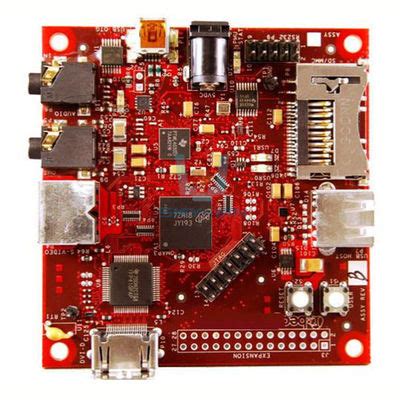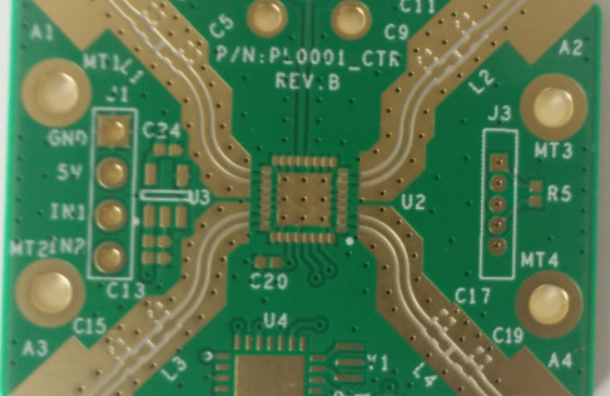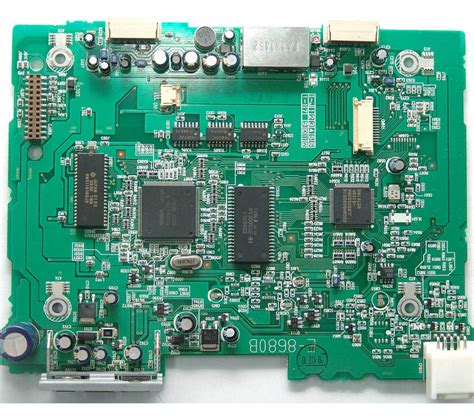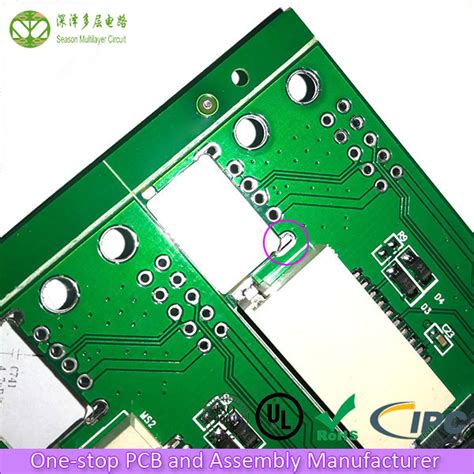2-4 layer metal core pcb mcpcb aluminum
Innovations In 2024 Smart SMT & PCB Assembly Technologies
In 2024, the landscape of Surface Mount Technology (SMT) and Printed Circuit Board (PCB) assembly is undergoing a significant transformation, driven by a wave of innovative technologies. These advancements are not only enhancing the efficiency and precision of manufacturing processes but are also paving the way for more complex and compact electronic devices. As the demand for smaller, more powerful electronics continues to rise, the industry is responding with cutting-edge solutions that address both current challenges and future needs.
One of the most notable innovations in SMT and PCB assembly is the integration of artificial intelligence (AI) and machine learning algorithms.
These technologies are being employed to optimize production lines, reduce errors, and improve quality control. By analyzing vast amounts of data in real-time, AI systems can predict potential issues before they arise, allowing for proactive maintenance and minimizing downtime. This predictive capability is particularly valuable in high-volume production environments, where even minor disruptions can lead to significant delays and increased costs.
In addition to AI, the use of advanced robotics is revolutionizing the assembly process.
Modern robotic systems are equipped with enhanced vision and dexterity, enabling them to handle components with greater precision and speed than ever before. This is particularly important as components continue to shrink in size, requiring meticulous placement and soldering. The ability of robots to work tirelessly and consistently also contributes to higher throughput and reduced labor costs, making them an indispensable asset in the modern assembly line.
Moreover, the advent of 3D printing technology is beginning to make its mark on PCB manufacturing.
While traditionally used for prototyping, 3D printing is now being explored for its potential in producing complex, multi-layered PCBs. This approach offers several advantages, including reduced material waste and the ability to create intricate designs that would be challenging to achieve with conventional methods. As 3D printing technology continues to evolve, it is expected to play an increasingly prominent role in the production of custom and low-volume PCBs.
Another significant development is the implementation of Industry 4.0 principles, which emphasize connectivity and data exchange across all aspects of manufacturing.
By leveraging the Internet of Things (IoT), manufacturers can create smart factories where machines, systems, and humans communicate seamlessly. This interconnected environment facilitates real-time monitoring and control, leading to improved efficiency and flexibility. For SMT and PCB assembly, this means faster adaptation to design changes and the ability to produce highly customized products with minimal lead times.
Furthermore, advancements in materials science are contributing to the evolution of PCB assembly.
New materials with superior thermal and electrical properties are being developed, enabling the creation of PCBs that can withstand higher temperatures and offer better performance. These materials are particularly beneficial for applications in demanding environments, such as automotive and aerospace industries, where reliability and durability are paramount.
In conclusion, the innovations in 2024 smart SMT and PCB assembly technologies are setting new standards for the electronics manufacturing industry. By embracing AI, robotics, 3D printing, Industry 4.0, and advanced materials, manufacturers are not only enhancing their production capabilities but also positioning themselves to meet the ever-growing demands of the market. As these technologies continue to mature, they will undoubtedly lead to even more groundbreaking developments, further transforming the way electronic devices are designed and produced.

The Role Of AI In Enhancing 2024 SMT & PCB Assembly Processes
In the rapidly evolving landscape of electronics manufacturing, the integration of artificial intelligence (AI) into surface mount technology (SMT) and printed circuit board (PCB) assembly processes is poised to revolutionize the industry in 2024. As manufacturers strive to meet the increasing demand for more complex and miniaturized electronic devices, AI offers a transformative approach to enhancing efficiency, precision, and overall productivity. By leveraging AI, companies can address the challenges associated with traditional assembly methods, thereby setting new standards for quality and innovation.
To begin with, AI-driven automation is significantly improving the accuracy and speed of SMT and PCB assembly.
Traditional assembly lines often rely on human operators to perform intricate tasks, which can lead to variability and errors. However, AI systems equipped with machine learning algorithms can analyze vast amounts of data to optimize placement and soldering processes. This not only reduces the likelihood of defects but also accelerates production cycles. Consequently, manufacturers can achieve higher throughput without compromising on quality, a critical factor in maintaining competitiveness in the global market.
Moreover, AI enhances the inspection and quality control stages of SMT and PCB assembly.
Conventional inspection methods, which often involve manual checks or basic automated systems, can miss subtle defects that may lead to product failures. In contrast, AI-powered vision systems can detect anomalies with remarkable precision by comparing real-time images against a database of known defects. This capability allows for immediate corrective actions, minimizing waste and rework. As a result, companies can ensure that their products meet stringent quality standards, thereby enhancing customer satisfaction and brand reputation.
In addition to improving operational efficiency, AI is instrumental in predictive maintenance within SMT and PCB assembly lines.
By continuously monitoring equipment performance and analyzing historical data, AI systems can predict potential failures before they occur. This proactive approach enables manufacturers to schedule maintenance activities during planned downtimes, reducing unexpected disruptions and extending the lifespan of critical machinery. Consequently, companies can optimize their resources and reduce operational costs, further enhancing their bottom line.
Furthermore, AI facilitates greater customization and flexibility in the assembly process.
As consumer preferences shift towards personalized electronic devices, manufacturers must adapt to shorter product life cycles and diverse product variants. AI-driven systems can quickly reconfigure assembly lines to accommodate different designs and specifications, allowing for rapid prototyping and production. This adaptability not only meets the demands of a dynamic market but also fosters innovation by enabling manufacturers to experiment with new ideas and technologies.
In conclusion, the role of AI in enhancing SMT and PCB assembly processes in 2024 is multifaceted and transformative.
By improving accuracy, speed, and quality control, AI addresses the limitations of traditional methods and sets new benchmarks for efficiency and reliability. Additionally, its predictive maintenance capabilities and support for customization empower manufacturers to remain agile and competitive in an ever-changing industry. As AI continues to evolve, its integration into electronics manufacturing will undoubtedly drive further advancements, paving the way for a future where technology and innovation are seamlessly intertwined.
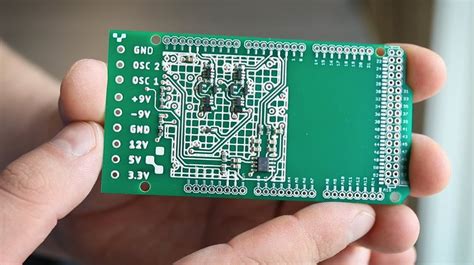
Sustainability Trends In 2024 Smart SMT & PCB Manufacturing
In 2024, the landscape of smart Surface Mount Technology (SMT) and Printed Circuit Board (PCB) assembly is undergoing a significant transformation, driven by a growing emphasis on sustainability. As the electronics industry continues to expand, the environmental impact of manufacturing processes has come under increased scrutiny. Consequently, manufacturers are adopting innovative strategies to minimize their ecological footprint while maintaining efficiency and quality. This shift towards sustainable practices is not only a response to regulatory pressures but also a reflection of the industry’s commitment to corporate social responsibility.
One of the primary trends in sustainable SMT and PCB manufacturing is the integration of energy-efficient technologies.
Manufacturers are increasingly investing in equipment that consumes less power, thereby reducing greenhouse gas emissions. For instance, the adoption of energy-efficient reflow ovens and pick-and-place machines is becoming more prevalent. These machines are designed to optimize energy use without compromising performance, thus aligning with the industry’s sustainability goals. Moreover, the implementation of smart factory solutions, such as the Internet of Things (IoT) and artificial intelligence (AI), enables real-time monitoring and optimization of energy consumption, further enhancing efficiency.
In addition to energy efficiency, the reduction of waste is a critical component of sustainable manufacturing practices.
The industry is witnessing a shift towards the use of eco-friendly materials and processes that minimize waste generation. For example, lead-free soldering has become a standard practice, reducing the environmental impact associated with lead-based materials. Furthermore, manufacturers are exploring the use of biodegradable substrates and inks, which contribute to reducing the long-term environmental impact of electronic waste. By prioritizing materials that are less harmful to the environment, the industry is taking significant steps towards achieving sustainability.
Another noteworthy trend is the emphasis on recycling and circular economy principles.
Manufacturers are increasingly focusing on designing products that are easier to disassemble and recycle. This approach not only extends the lifecycle of electronic components but also reduces the demand for raw materials. By implementing closed-loop systems, companies can recover valuable materials from end-of-life products and reintroduce them into the production cycle. This not only conserves resources but also reduces the environmental burden associated with mining and material extraction.
Furthermore, the adoption of digital twin technology is revolutionizing the way manufacturers approach sustainability.
By creating a virtual replica of the production process, companies can simulate and analyze various scenarios to identify opportunities for improvement. This technology allows for precise optimization of resource use, minimizing waste and energy consumption. Additionally, digital twins facilitate predictive maintenance, reducing downtime and extending the lifespan of equipment, which in turn contributes to sustainability.
As the industry continues to evolve, collaboration and knowledge sharing are becoming increasingly important.
Manufacturers, suppliers, and stakeholders are working together to develop and implement best practices for sustainable manufacturing. Industry associations and consortiums are playing a pivotal role in facilitating this collaboration, providing platforms for sharing insights and innovations. By fostering a culture of cooperation, the industry is better equipped to address the complex challenges associated with sustainability.
In conclusion, the trends in sustainable SMT and PCB manufacturing in 2024 reflect a broader commitment to environmental stewardship. Through the adoption of energy-efficient technologies, waste reduction strategies, recycling initiatives, and digital innovations, the industry is making significant strides towards a more sustainable future. As these practices become more widespread, they not only enhance the environmental performance of the industry but also contribute to its long-term viability and success.
Challenges And Solutions In 2024 Smart SMT & PCB Assembly
In 2024, the landscape of smart Surface Mount Technology (SMT) and Printed Circuit Board (PCB) assembly is evolving rapidly, driven by technological advancements and increasing demands for efficiency and precision. However, this evolution is not without its challenges. As the industry strives to meet the growing needs of various sectors, including consumer electronics, automotive, and telecommunications, several obstacles must be addressed to ensure seamless operations and high-quality outputs.
One of the primary challenges in smart SMT and PCB assembly is the integration of advanced technologies such as artificial intelligence (AI) and machine learning (ML).
These technologies promise to enhance the precision and speed of assembly processes, yet their implementation requires significant investment and expertise. Companies must navigate the complexities of integrating AI-driven systems into existing workflows, which often involves retraining staff and upgrading equipment. Moreover, the initial costs associated with these technologies can be prohibitive for smaller manufacturers, potentially widening the gap between large and small industry players.
In addition to technological integration, the industry faces the challenge of maintaining quality control amidst increasing production speeds.
As demand for electronic devices grows, manufacturers are under pressure to produce more units in less time. This acceleration can lead to a higher risk of defects and errors if not managed properly. To address this, companies are turning to automated inspection systems that utilize computer vision and AI to detect anomalies in real-time. These systems not only improve accuracy but also reduce the reliance on manual inspections, which can be time-consuming and prone to human error.
Another significant challenge is the need for greater flexibility in production lines.
With the rapid pace of innovation in electronics, manufacturers must be able to quickly adapt to new designs and components. This requires a shift towards more modular and reconfigurable assembly lines that can accommodate a variety of products without extensive downtime. Solutions such as flexible robotic arms and modular conveyor systems are being explored to enhance adaptability and reduce changeover times.
Furthermore, the industry must contend with supply chain disruptions, which have become increasingly common due to geopolitical tensions and global events.
These disruptions can lead to shortages of critical components, delaying production schedules and increasing costs. To mitigate these risks, companies are investing in supply chain resilience strategies, such as diversifying their supplier base and implementing advanced forecasting tools to better anticipate and respond to potential disruptions.
Environmental sustainability is also a pressing concern in the SMT and PCB assembly industry
As electronic waste continues to grow, manufacturers are under pressure to adopt more sustainable practices. This includes using eco-friendly materials, reducing energy consumption, and implementing recycling programs. Companies are exploring innovative solutions such as biodegradable substrates and energy-efficient manufacturing processes to minimize their environmental impact.
In conclusion, while the smart SMT and PCB assembly industry in 2024 faces numerous challenges, there are also promising solutions on the horizon. By embracing advanced technologies, enhancing quality control measures, increasing production flexibility, strengthening supply chain resilience, and prioritizing sustainability, manufacturers can navigate these challenges effectively. As the industry continues to evolve, collaboration and innovation will be key to overcoming obstacles and achieving success in this dynamic field.


